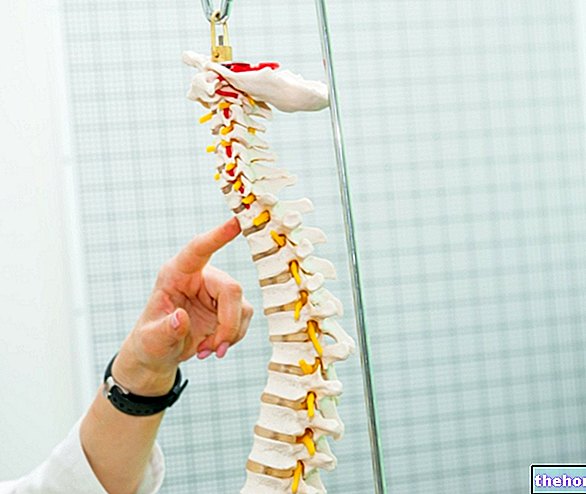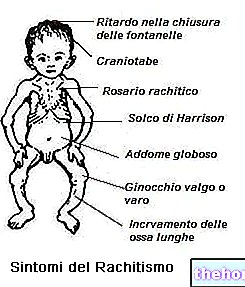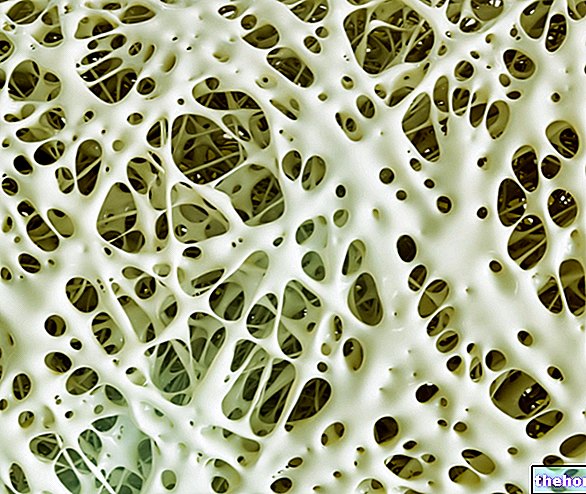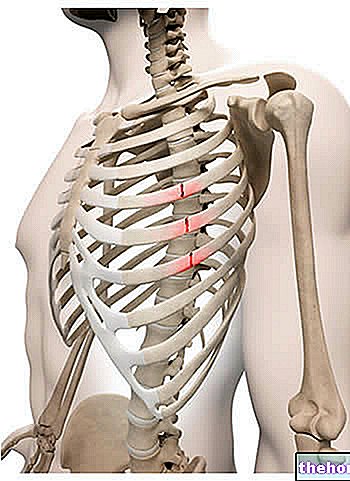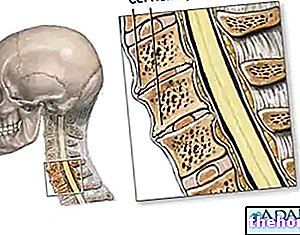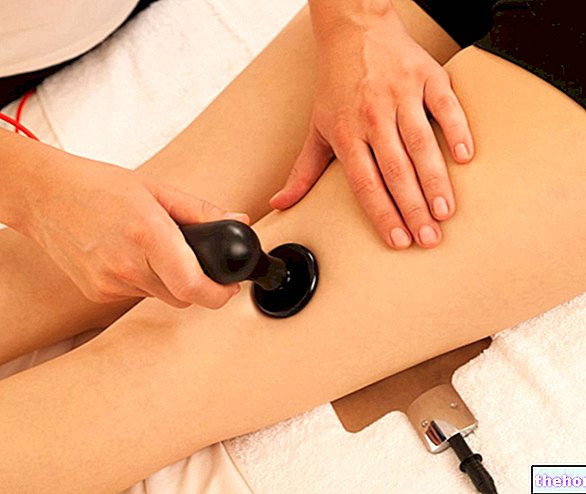Rheumatism is defined as some uncomfortable symptoms that affect the joint system.
Almost always characterized by intense pain (only in movement or even when stationary), stiffness and poor general function, sometimes they radiate to the muscle, tendon, ligament, bone and visceral level.

Rheumatism affects different sexes and age groups depending on the cause. In an absolute sense, the elderly are more involved.
Other predisposing factors are: autoimmune diseases, obesity, bone necrosis, fractures, osteomyelitis, etc.
Rheumatism should not be confused with the symptoms of completely different pathologies such as: polymyositis, scleroderma, polymyalgia etc.
Sometimes they are accompanied by redness, swelling and edema.
The remedies are preventive and palliative; it is very difficult for the triggering cause of rheumatism to recover completely.
The published material is intended to allow quick access to general advice, suggestions and remedies that doctors and textbooks usually dispense for the treatment of Rheumatism; such indications must in no way substitute the opinion of the attending physician or other health specialists in the sector who are treating the patient.
What to do
- In the presence of a full-blown family history (especially direct relatives), those who suspect they can contract certain pathologies responsible for rheumatism (if possible) should adopt specific prevention. This can include:
- Motor activity.
- Diet.
- Early diagnosis: in some cases it is simple (for example in "osteoarthritis), in others more complicated. Since rheumatism is quite generic symptoms, the first diagnosis can be wrong and lead to a specific cure.
- Resolution of the problem: Again, this can vary according to the triggering agent. Some diseases can be cured or stopped, others only involve controlling inflammation and pain. The remedies can be divided into:
- Gymnastics.
- Massages and physiotherapy.
- Natural interventions.
- Medicines.
- Surgical interventions.
What NOT to do
- Ignore possible inheritance.
- Follow a sedentary lifestyle: mobility favors joint lubrication, mechanical stimulation of growth / maintenance and muscle support (by lightening the joint itself).
- Practicing sport at the limit of reasonableness: let's not forget that over the years the articular cartilages do not regenerate with the same efficiency.
- Do not follow specific therapies for some diseases:
- Diet: for example for diabetes and obesity.
- Medicines: for example for hyperuricemia / gout.
- In the acute phase, practice intense motor activities: they can trigger a more intense inflammatory process and require longer healing times, compromising the trophism of the muscular system.
- Discard a priori the possibility of a perennial treatment.
- Refusing to practice specific gymnastics, massages, rehabilitation or to undergo surgery: the risk is to worsen the general condition and expose the other joints more to rheumatism.
What to eat
There is no diet against rheumatism, although certain metabolic pathologies can be controlled above all with food therapy.
In particular, the diet is necessary in case of:
- Hyperuricemia / gout: in the past, diets were recommended very low in purines, which are the molecules mainly responsible for the synthesis of uric acid. The latter, accumulating in the joints, gives rise to gout rheumatism. Today we tend to prefer more effective pharmacological therapies and avoid drastic diets by keeping weight under control.
- Type 1 and 2 diabetes mellitus: decompensated diabetes is related to all types of ailments, including rheumatism. It is necessary:
- To undertake a diet that includes the minimum percentage of carbohydrates tolerated by the body.
- Consume portions with moderate glycemic loads.
- Prefer foods with a low glycemic index.
- Exclude foods rich in refined carbohydrates and increase the amount of total fiber.
- Obesity: like diabetes, it also predisposes to rheumatism. It correlates with an increase in inflammation in the blood, an increase in joint load, a greater predisposition for various pathologies, etc. It is necessary:
- To undertake a low-calorie but balanced diet and associated with the practice of motor activity.
In all cases, it is also advisable:
- Promote the intake of essential omega 3 fatty acids: they are responsible for reducing systemic inflammation and fight all types of metabolic pathologies. Blue fish (sardines, mackerel, bonito, alletterato, etc.), algae, some oil seeds (flax, kiwi, grape seeds, etc.) and related extraction oils are rich in it.
- Optimize the intake of other anti-inflammatory molecules:
- Vitamins and minerals: vitamin A (vegetables and red-orange fruits, dairy products), vitamin C (sour fruit, peppers, lettuce), vitamin E (cereal germ and oil seeds), zinc and selenium (meat, liver, shellfish, dairy products ).
- Polyphenols: all vegetables, fruits, oil seeds, whole grains and legumes.
What NOT to Eat
There is no list of foods that are not recommended.
However, it may be useful to avoid:
- Diets rich in preserved or cooked foods
- Single-issue diets.
- Vegan or purely carnivorous diets.
- Excess of alcohol.
- Excess of saturated fats: frankfurters, hamburgers, fatty cheeses, cream, etc.
- Excess of hydrogenated fats: sweet snacks, french fries, other salty snacks, commercial baked goods etc.
- Excess of sweet foods: packaged and unpackaged.
- Excess of omega 6 fatty acids compared to omega 3: they are mainly contained in some seeds of dried fruit, which is why it is advisable to selectively increase omega 3 by taking peach products and specific seeds / oils.
NB. The last four groups of nutrients, if present in excess, tend to increase the vestments of inflammation.
Natural Cures and Remedies
Natural remedies for rheumatism are of various kinds:
- Supplements: mainly based on omega 3 and gamma linolenic acid (omega 6 not essential). The reasons are the same as described in the “What to Eat” paragraph.
- Phytotherapy: based on the use of extracts or whole plants, it mainly has an anti-inflammatory role. The most used orally are:
- Boswellic acid.
- Curcumin.
- Devil's claw (not without side effects).
- Motor activity: regular, not very intense, of a mixed type (aerobic and strength, weighted in relation to the case). It must be aimed at:
- Maintenance of muscle efficiency.
- Joint mobility.
- Massages and physiotherapy: especially useful where motor activity is not well practicable due to: pain, lack of muscle tone, etc.
- Thermal treatments and mud: the "humid" heat is beneficial for the joints. The medical reason is unclear, but both appear to relieve both inflammation and pain.
Pharmacological treatment
Pharmacological remedies for rheumatism change according to the pathology that triggers them.
The categories are:
- Non-steroidal anti-inflammatory drugs: also called NSAIDs, they are mainly used to reduce inflammation and pain. They are taken orally. Some examples are:
- Paracetamol: for example Acetamol, Tachipirina, Sanipirina, Efferalgan, Normaflu.
- Ibuprofen: for example Brufen, Moment, Subitene.
- Naproxen: for example Aleve, Naprosyn, Prexan, Naprius.
- Indomethacin: for example Difmetre, Indom, Liometacen.
- etc.
- Opioid pain relievers: when the pain is too intense. They are taken orally.
- Hydrocodone: for example Vicodin (not sold in Italy).
- Corticosteroids: used mainly in arthritis, they can have various side effects; however, they can slow down joint damage. The same function is not performed by NSAIDs:
- Prednisone: for example Solprene, Deltamhydrin.
- Dexamethasone: for example Soldesam, Decadron.
- etc.
- Immunomodulators and anti-arthritics: they tend to block the pathological degeneration of arthritis:
- Penicillamine: for example Sufortan.
- Hydroxychloroquine: for example Plaquenil.
- Chloroquine: for example Chloroquine, Cloroc FOS FN.
- etc.
- Hyaluronic acid and chondroprotectors: to be taken orally, they should facilitate the maintenance of cartilage.
By local application or infiltration:
- Capsaicin: for example Qutenza.In ointment to be applied locally, it is used to reduce pain.
- Methylprednisolone acetate: for example Medrol, Urbason, Solu-Medrol. It is a "corticosteroid" infiltration and is used primarily in the knee.
- Sodium hyaluronate: for example Artz injectable. It is an analgesic infiltration and it is also used mainly in the knee.
Prevention
The prevention of rheumatism is rather limited.
The onset depends above all on the genetic predisposition of the individual.
Nonetheless, both time of onset and severity can differ according to behavioral and environmental variables.
It is necessary:
- Maintain a normal weight.
- Ensuring the overall nutritional status.
- Ensure good musculoskeletal efficiency.
- Monitor any other inflammatory diseases.
Medical treatments
Non-pharmacological medical treatments for rheumatism are specific to the triggering agent.
The most used is the surgical one, which may be necessary especially in the presence of:
- Rheumatoid and gouty arthritis: when joint calcifications or uric deposits are such as to permanently prevent movement, and therefore must be removed.
- Arthrosis: to insert replacement prostheses when cartilage and / or bone necrosis are exhausted.
- More rarely in other situations, but there is no shortage of borderline cases and exceptions.

